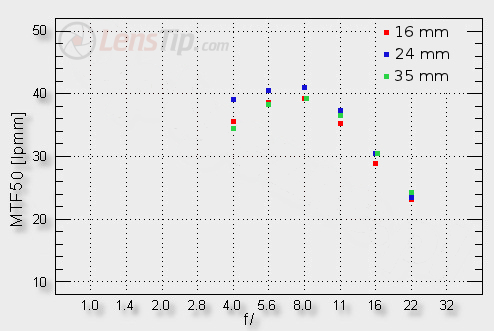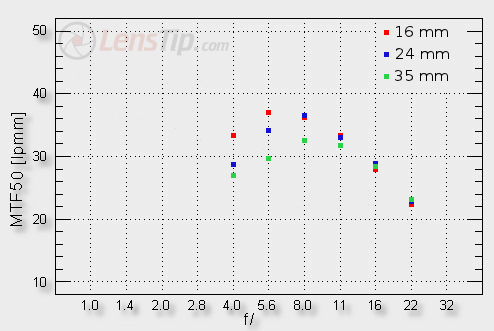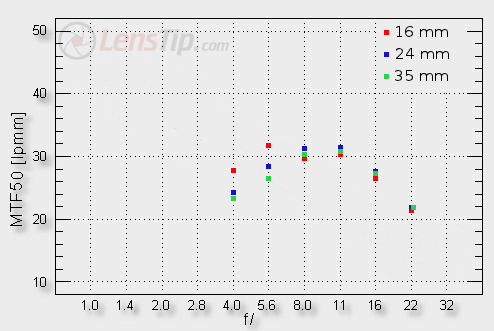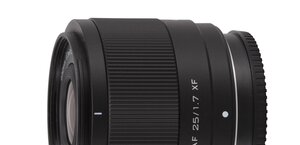Nikon Nikkor AF-S 16-35 mm f/4G ED VR
4. Image resolution
Results of the Nikkor are easily comparable to those of the Tokina AT-X PRO FX SD 17–35 mm f/4 (IF) and the Nikkor AF-S 18–35 mm f/3.5–4.5G ED which were tested by us on the same body not so long ago.
Let’s check first how the tested lens fares in the middle of the frame.
Please Support UsIf you enjoy our reviews and articles, and you want us to continue our work please, support our website by donating through PayPal. The funds are going to be used for paying our editorial team, renting servers, and equipping our testing studio; only that way we will be able to continue providing you interesting content for free. |
- - - - - - - - - - - - - - - - - - - - - - - - - - - - - - - - - - - - - - - - - - - - - - - -

The results can be described as good. There are no sensational, record-breaking values but, for a wide angle lens, it would be difficult to perform so well as the most expensive, fixed focus devices. It’s worth emphasizing that at every focal length, even with the lens wide open, the image remains fully useful - it is indeed a strong point of the tested Nikkor. The fact that its performance is quite even is also worth our attention – only the 24 mm focal length sticks out a bit, being slightly better than the rest. If you want to criticize it, though, you might say that a lens at this price point should reach 42-43 lpmm without any problem and the Nikkor doesn’t manage it. Its cheaper rivals, the Nikkor AF-S 18–35 mm f/3.5–4.5G ED or the Tokina AT-X PRO FX SD 17–35 mm f/4 (IF) are simply better. It is nothing to be proud of…
Now, let’s check the situation on the edge of the APS-C/DX sensor.

The graph above show you clearly you meet first real difficulties here. As at 16 mm everything is still fine because even by f/4.0 the image remains fully useful, you can’t say that much about the longer end of the focal range, where the MTFs are below 30 lpmm. It is not good news. At 35 mm even f/5.6 aperture provides values a tad lower than 30 lpmm. Once again the Nikkor 16-35 mm VR fares worse than the Nikkor 18-35 mm and the Tokina 17-35 mm.
How the tested lens performs on the edge of full frame? Let’s check it out!

Here there are no good news at all. At the maximum relative aperture the image isn’t useful at any focal length. If you want it to reach the usefulness level you have to stop down to f/8-11 and even then the 30 lpmm value is exceeded just slightly. The rival Tokina 17-35 mm and the Nikkor 18-35 mm didn’t fare here exceedingly well but their performance can still be assessed better because the Nikkor 16-35 mm VR is the most expensive device of all.
The summary of this chapter must be critical. The good performance in the frame centre is evidently an asset but it is not enough when you take into account the price of the lens, its results on the edge of the frame, and the results of such instruments as the Tokina 17-35 mm and the Nikkor 18-35 mm which, although nearly two times cheaper, fare better almost everywhere.
At the end we present crops from photos of our resolution testing chart; they were taken from JPEG files saved along RAW files, used for the analysis above.
 |






